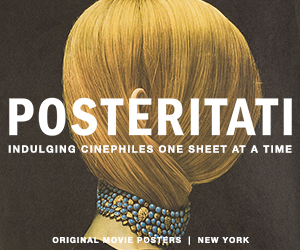With Frankenstein, Guillermo del Toro’s gothic instincts flower into full-blown Romanticism.
Del Toro has mostly emphasized the gothic over the Romantic—narratively, in the likes of The Devil’s Backbone and Crimson Peak, and also in the production design of almost all of his pictures (dark passages, high arches, and the like). Yet you can also sense, especially in something like The Shape of Water, a reaching for the sublime, even amidst the “ugly” or uncanny. Frankenstein, in following the lead of Mary Wollstonecraft Shelley’s 1818 novel, which was born both of her own imagination and her time with Romantic poets Percy Shelley and Lord Byron, pushes further in that direction. Del Toro’s film is a gothic horror story, with gloomy settings and macabre dismemberments, yet it also holds, within its central Creature, a heart that yearns for an ecstatic life.
That said, I shouldn’t downplay the gothic grisliness at play in this Frankenstein. The careful craft and detailed attention he brings to the viscera involved in Victor Frankenstein’s project—to re-animate a conglomeration of corpses into a whole, living human being—is one of this adaptation’s distinguishing features. Despite the blood and guts, however (indeed, precisely in them), there is a strange beauty to some of the movie’s imagery: a lymphatic system splayed on a wooden board, something like the veins of a leaf; an early test subject crumpled across a table, in a gentle posture of submission; and the pallid, muscly power of the Creature himself (more on him later). Perhaps the most unsettling combination of horror and beauty is an early demonstration Victor gives to his academic colleagues, where he momentarily animates the abdomen and head of a recently deceased shopkeeper that has been paired with the arm of a recently deceased carpenter. When the monstrous figure’s heart started up—an awful, gasping wheeze forcing its way out of its mouth—my own heart skipped.
Oscar Isaac plays Victor as a cocky heartthrob confident enough to conduct such experiments—and to do so without wearing a shirt. As a foil (and a variation on a minor figure in Shelley’s novel), Mia Goth plays Elizabeth, Victor’s sister-in-law. While she also has scientific inclinations—insects primarily, a passion echoed by her evocative, unfurling gowns, courtesy of costume designer Kate Hawley—Elizabeth’s impulses are more appreciative than manipulative. While she talks about “God’s design,” Victor boldly suggests that “God is inept” for allowing such a thing as death. (Overall, this Frankenstein is less about the creation of life than the prevention of death.)
In her capacity for wonder, Elizabeth shares a sensibility with the Creature. (Del Toro pointedly credits him as “Creature,” not “Monster.”) Jacob Elordi (so good as Elvis in Sofia Coppola’s Priscilla) takes on one of the most difficult roles in cinema, in terms of its believability, and left me not only credulous, but enraptured. There is a tenderness to his Creature, evidenced early on after Victor has put him in chains, claiming it’s for his own good. Rather than raging, the creature holds his head mournfully in his hands. Imprisoned in the mortuary at the bottom of Victor’s castle, where a gutter runs down the middle of the floor to channel the flow of blood, the Creature delightedly drops a leaf in a stream of water to watch it lilt along. Later, once language has become possible, he gives a plaintive speech about “merciless life” and what it feels like to be feared and hated.
Elordi’s performance is where the movie’s gothic gestures give way to a vision that is decidedly Romantic. In the movie’s final scene, which is a departure from the novel, one of the characters makes a literal motion of this very nature. This is followed by an onscreen coda quoting Byron: “… the heart will break, yet brokenly live on.” In retrospect, this is the only Frankenstein that del Toro—whose ghosts and monsters have long gestured toward the sublime as much as the horrific—could have given us.
(11/5/2025)



